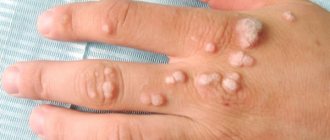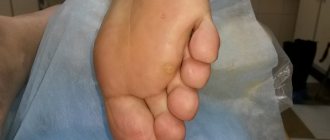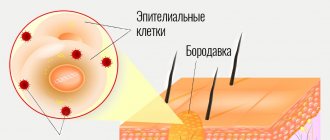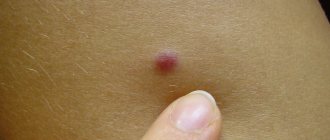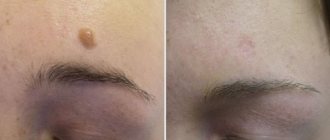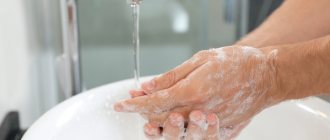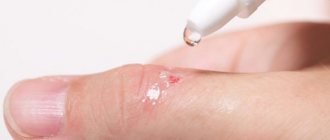REMOVAL OF NEW PLANTS
LASER REMOVAL OF MOLES
Duration of the procedure:
5-30 min.
Number of procedures:
1
Price:
from 1500 rub. (depending on the category of complexity of the tumor + anesthesia)
Recovery period: 7-20 days
Equipment: CO2 laser
A mole nevus in other words, is a skin pigmented formation, both acquired and congenital. Black, brown, red and other shades, the spots have a slight elevation above the skin level or a flat base. The formation of a mole is influenced by melanocytes - cells filled with pigment. Their crowding in one place forms a mole.
Are moles safe? Indications for mole removal
Ordinary moles do not threaten human health. Examine your body yourself, regularly visit a dermatovenerologist to identify unsafe skin growths. The doctor will conduct an examination using dermatoscopy to determine the threat from suspicious formations on the skin. Indeed, sometimes nevi can degenerate into melanoma - a malignant neoplasm.
Moles that have a slight elevation above the skin are often injured during hygiene procedures, while changing clothes, etc. Constant exposure to a mole can change the tissue structure, and it can degenerate into a malignant neoplasm. Therefore, such tumors must be removed. The best way is laser removal of moles.
Also among other indications for laser mole removal:
- changes in the color, shape, size of the mole;
- bleeding – periodic;
- soreness, itching, other sensations of discomfort;
- the formation of new, larger moles;
- aesthetic problems on the face and body;
- cracks on the surface of the nevus.
Reviews
Alina K.
I had a birthmark right under my eyebrow. I thought it was a monstrosity and dreamed of getting rid of it. True, for a long time I didn’t have the courage to go to the doctor. First I saw a dermatologist. He examined me for oncology and reassured me that nothing bad would happen. I made an appointment for surgery. They gave me several injections around the spot and it was removed in 10 minutes. The doctor gave me a bottle of medicine and told me to wipe the sore every day. Morning and evening I wet the bandage and treated the skin. The brown crust fell off after 6 days. Everything was clean under the eyebrow, no marks remained. It should have been done a long time ago.
Irina S.
Our entire family has growths all over our bodies. I have experience with cutting using different methods, but laser turned out to be the most successful. I've already removed about twelve of them. The last time there were two - hanging on the shoulder and on the stomach near the zipper of the jeans. These must be cut off to avoid scratching. They can turn into cancer. True, you need a lot of money if you need to bring together several. Histology is normal. I spent about half an hour in the office while they injected me and then cauterized me. The one on the stomach left a hole. The doctor said that the roots were deep and they were completely cut out. This means it won't grow again. At home I wiped it with peroxide and did bandages every day. I covered my shoulder from the sun for another 2 months. Everything healed completely within a month. There are no scars left. Cool procedure, I recommend it to everyone.
Laser mole removal – Before / After
Benefits of laser mole removal
Today in cosmetology there is a modern and progressive method of getting rid of tumors - laser removal of moles . The nevus is removed using a laser using vaporization (evaporation of altered tissue). Laser mole removal has many benefits:
- Laser removal of moles on the face or body takes only 5-10 minutes;
- No pain due to the use of an anesthetic;
- Relapses are excluded. Tissue trauma is minimal; due to a wide range of laser settings, mole removal occurs in a targeted manner without affecting healthy tissue.
- There is no bleeding. The laser immediately affects damaged vessels, sealing them.
- The rehabilitation period is short. The healing period of the wound surface lasts from 7 to 20 days, depending on the area of the wound. At the site of mole removal, skin of a natural shade appears. There are no scars.
- There is no risk of infection. The procedure is carried out under sterile conditions. The effect on the skin is non-contact.
Recovery period
Best materials of the month
- Coronaviruses: SARS-CoV-2 (COVID-19)
- Antibiotics for the prevention and treatment of COVID-19: how effective are they?
- The most common "office" diseases
- Does vodka kill coronavirus?
- How to stay alive on our roads?
After laser exposure, a dark crust forms at the site of the mole. This is a normal skin reaction to intervention. The crust forms a kind of protective layer that blocks damage/infection of the epidermis and helps to quickly return to normal. The main thing is not to tear off the crust, as an unaesthetic scar may form in its place.
The area should not be wetted for the first 5-7 days, but this does not negate general body hygiene. Try to protect your skin from mechanical damage, contact with cosmetics and ultraviolet rays. All these factors can slow down the recovery process and damage the structure of the skin. Treat the wound daily and lubricate it with medications prescribed by the dermatologist. After applying medications, you should use sunscreen or a spray that will prevent ultraviolet radiation from affecting the health of your skin.
Applying bandages or burning the surface with alcohol is also prohibited. If the condition of the wound bothers you (pain, redness, rash), be sure to inform your dermatologist.
Rehabilitation: skin care
After laser removal of a mole, a wound remains. Depending on the size of the wound surface, healing lasts 1-3 weeks. The crust that appears then falls off, leaving behind a pink spot. The new skin retains its color from three weeks to six months. A spot on the skin up to 1 cm after time cannot be distinguished from healthy areas. If the wound was more extensive, then after healing there will be a light area on the surface of the skin. This effect occurs due to a lack of connective tissue, resulting in its replacement with scar tissue.
For two weeks after removal of the tumor, you should adhere to the following rules:
- do not engage in intense physical activity;
- ensure that the skin is not exposed to hypothermia or overheating;
- exclude solarium, bathhouse and sauna;
- do not remove the crust from the wound surface;
- avoid contact with chemicals (household);
- do not treat with alcohol solutions;
- Avoid rubbing the wound with a towel.
Your doctor will recommend how to care for the wound and prescribe an antiseptic for treatment.
Possibility of unforeseen consequences
Laser correction of moles is one of the safest ways to get rid of nevus, avoiding complications and unforeseen consequences. A beam of directed light radiation literally evaporates the pigmented cells of moles, which is visually manifested by the complete removal of the epidermal formation in just a few minutes. Minimization of negative consequences occurs due to the following objective factors.
- The laser beam acts in a strictly targeted and selective manner, without injuring healthy skin structures, which allows the technique to be used even to remove the smallest nevi in the eyelid area and mucous membranes;
- There is virtually no risk of infection, since the laser exhibits a powerful antibacterial and antimicrobial effect, protecting the wound surface from infection;
- Laser destruction is not accompanied by bleeding or hemorrhage, since during the manipulation process all blood capillaries supplying the body of the mole undergo thermal coagulation;
- The laser activates regenerative processes in the skin, which significantly accelerates wound healing;
- The technique is low-traumatic, which avoids the formation of connective tissue and all the negative consequences associated with this factor.
Despite the safety of the method, it should be borne in mind that before the procedure it is necessary to carefully study the list of contraindications, since the consequences and complications of laser correction most often result from neglect of this list, which includes the following conditions:
- Pregnancy;
- Acute infectious process;
- Oncology of any localization;
- Inflammation in the intended area of laser exposure;
- Period of menstruation in women;
- Immunodeficiency;
- Exacerbation of chronic pathologies;
- Hyperthermia.
Contraindications to laser use
Laser mole removal is not performed if:
- allergic reactions to ultraviolet radiation;
- malignant neoplasms;
- increased sensitivity of the skin;
- inflammatory skin diseases;
- high body temperature or weakened immunity;
- high sugar;
- and laser removal is not performed for epilepsy and during the period of waiting and feeding a child.
Medical specialists in St. Petersburg advise that you definitely perform a dermatoscopy and, if necessary, remove moles and other tumors, even if they do not cause any discomfort at all.
Where can you check moles in St. Petersburg for malignancy?
If you have a problematic mole and would like to have it checked for malignancy and removed, please contact our clinics. Removal of tumors is carried out by experienced specialists who treat each patient carefully and responsibly - dermatocosmetologist, dermatologist, laser removal specialist, dermatologist-oncologist. Moles are tested for malignancy in the laboratory immediately after collecting the material. If you decide to remove a mole at the nearest beauty salon, they will not provide you with this service, which means there will be no opportunity to assess the nature of the neoplasm, which is very important when diagnosing cancer. Laser mole removal can be done in our clinics.

